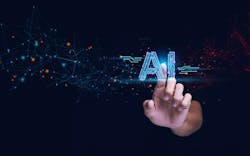Are workforces in the process space using artificial intelligence differently?
Artificial intelligence is empowering all facets of industry in all sorts of innovative ways, but uses of AI for workforce-development often get overlooked. Here we chat with Manas Dutta, general manager for the workforce-excellence business at Honeywell Process Solutions, to explore that human side of the AI coin. Take a look...
Smart Industry: How is AI being empowering workers in the process space, specifically?
Manas: Workforce competency and efficiency improvement is a key area where artificial intelligence is being applied. As the process-sector workforce shifts and expands, companies are expected to be more agile and prepared when it comes to training and safety. What’s more is the younger workforce doesn’t learn the same way as those they will replace one day, whether it be because they are retiring or leaving for another opportunity. Workers today don’t learn from a manual—their training ground is a digital environment. Incorporating AI into this area is one of the ways companies are efficiently and effectively able to support employees, meet skills-training gaps, and provide data and insights to improve their efficiency.
Smart Industry: What are intelligent wearables and how do they interface with AI? What gains does this approach enable?
Manas: AI systems can analyze vast amounts of data quickly and provide valuable insights to industrial frontline workers through intelligent wearables. This helps them make informed decisions and solve problems more effectively.
These technologies use AI that enable companies to improve productivity and compliance with process procedures, capture the expertise of experienced workers, and provide critical insights and information effectively to trainees and support workers in the field. This approach delivers complete outcome-based solutions that track specific key-performance indicators and integrates hardware, software and services. These technologies assist in accelerating training, improving efficiency, and ensuring safety for field operators.
Smart Industry: How does this marriage boost worker safety?
Manas: There is a strong link between competency and safety in various domains, including industrial. Competency refers to having the necessary knowledge, skills and abilities to perform a task or job effectively. When it comes to safety, competent individuals are better equipped to identify hazards, make informed decisions, and take appropriate actions to mitigate risks.
Our solution for field-worker competency and productivity enables companies to tie performance directly to the performance of their workers.
AI can enhance worker safety by monitoring and analyzing data in real time. For example, AI-powered systems can detect anomalies in equipment or identify potential safety hazards, allowing workers to take proactive measures to prevent accidents
By connecting field workers with remote advice, intelligent wearables also reduce the need for site visits from experts, empower workers to continue learning and become their best and effectively share their knowledge with peers. Each of these assets ultimately supports the worker, providing data that will keep them safe and training that will keep them up to date with the latest requirements.
Smart Industry: How is the role of AI changing in regard to worker training? Do workers expect this type of smart training?
Manas: As AI is increasingly integrated into workforce training, it is forecasted that workers will expect near real-time feedback and access to problem-solving. For example:
- AI-powered natural-language-processing (NLP) technology enables interactive and conversational training experiences. Chatbots and virtual assistants equipped with NLP capabilities can answer learner questions, provide explanations, and offer guidance. These AI systems can understand and respond to natural-language inputs, creating more engaging and interactive training interactions.
- AI technologies are integrated with virtual and augmented reality to create immersive training simulations. These simulations replicate real-world scenarios, enabling workers to practice skills and tasks in a safe and controlled environment. AI algorithms can provide real-time feedback, guidance, and assessment, enhancing the effectiveness of training and skill development.
Smart Industry: What does this all look like in five years?
Manas: AI in workforce training is likely here to stay and will likely become even more prevalent over the next five years. While we cannot predict the future, it’s safe to say companies in the process sector should prepare accordingly for AI to become an integral part of workforce development.
